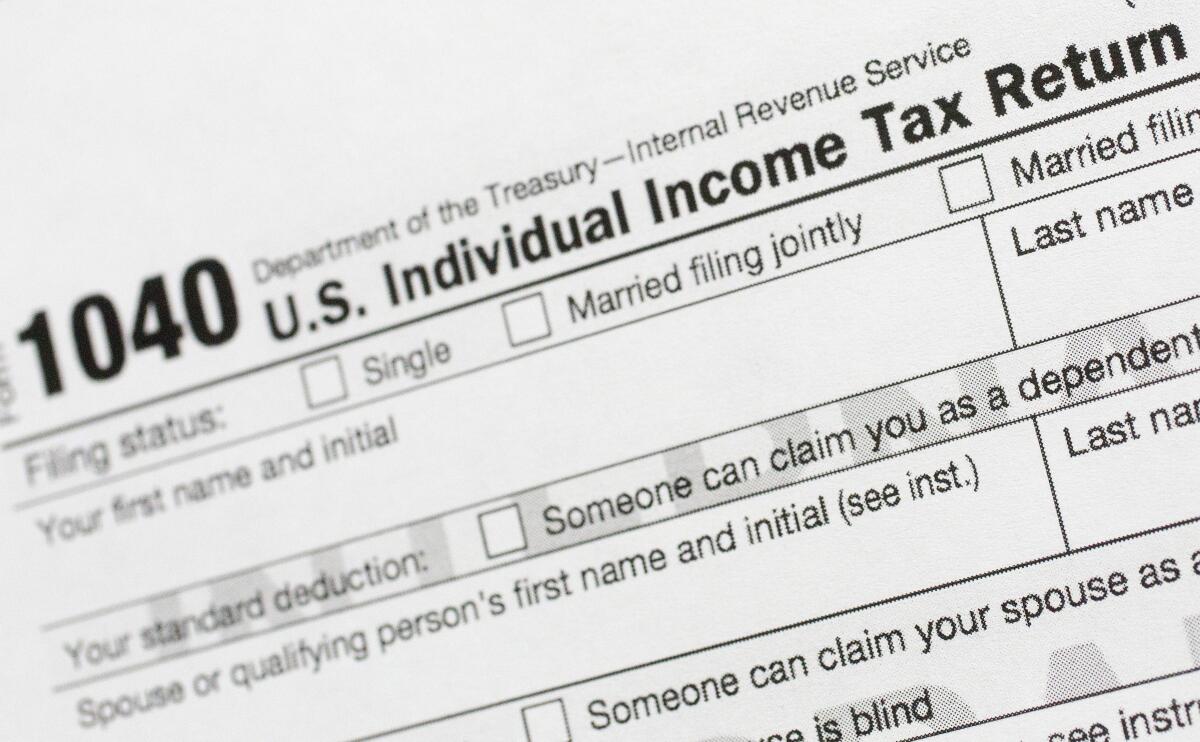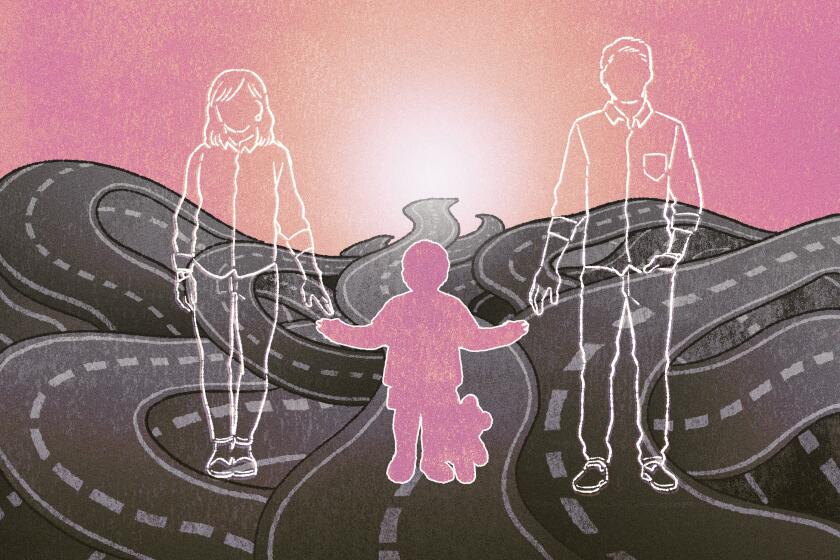California is expanding tax credits. Thousands who need it most may not claim them

SACRAMENTO â California is extending the reach of its tax credits, including creating a first-in-the-nation $1,000 benefit for former foster youth.
But the programs â designed to reduce taxes owed to the government and get cash into the pockets of those living in poverty â remain underutilized, leaving millions of dollars on the table each year.
The state budget signed last month by Gov. Gavin Newsom includes more than $100 million to expand tax credits for low-income Californians, as research has shown that the no-strings-attached benefits are among the best ways to help those in need.
State officials, though, grapple with a conundrum: Not everyone who qualifies is likely to claim the credits, and those who need them most may not file taxes at all.
Thatâs in part because low earners in California are not required to file taxes. The threshold requirement for single Californians without dependents is a gross annual income of $19,310.
A study published last year by the nonpartisan California Policy Lab found that nearly half of households that receive CalFresh food benefits were eligible for the stateâs Earned Income Tax Credit but did not receive it, totaling $76 million in unclaimed credits.
You have options when applying to become a foster parent in Los Angeles County. Hereâs what you should know and some questions you should ask yourself.
âTax filing is the most effective poverty-reducing tool in our country. Itâs one of the most fair ways of getting money out the door. But it may not be the most efficient way,â said Anna Johnson, associate director of housing and health at John Burton Advocates for Youth, a nonprofit serving young adults who are in the foster care system or unhoused. âWeâre really trying to make it a more equitable, responsive structure. If we donât give a significant enough incentive to overcome these barriers, itâs going to keep getting in the way.â
Another hurdle is cost: Tax preparers can charge upward of $300, muting the impact of potential credits.
âThat really eats into peopleâs refunds. There isnât enough support for low-income and no-income people to file their taxes,â said Sabrina De Santiago, policy and research director at Golden State Opportunity, an antipoverty organization that operates CalEITC4me, a tool that helps people determine tax credit eligibility.
Advocacy groups have launched information campaigns about tax credits and coordinated free tax preparation and filing centers across the state since California created programs mirroring the federal benefits starting in 2015.
The full universe of people potentially eligible for tax credits who do not claim them is unknown, as the state lacks substantial data, according to the California Policy Lab.
Some of the stateâs outreach efforts have proved insufficient. Over the course of two years, text messages and letters reached more than 1 million eligible Californians, urging them to claim the credits, but none of the efforts âhad demonstrable impactsâ on tax filings or claims of the Earned Income Tax Credit, according to a California Policy Lab report in 2020.
Instead, advocates say, the emphasis should be on affordable, community-based tax help. Filing for a tax credit has a multiplying effect, they said, and can open filers up to other benefits they did not realize they are eligible for and streamline processes for other government programs.
A pilot project launched last year in Santa Clara County reported that it assisted 45 foster-care-involved young adults with their taxes and collectively yielded returns totaling more than $135,000. The project increased first-time filersâ annual income, on average, by 17%, and, for those who are parents, by 42%, according to a report by John Burton Advocates for Youth.
âWeâre trying to find ways to make it as easy as possible for people to file their taxes,â De Santiago said. âItâs really important, because a tax refund is often one of the biggest lump sums theyâll get in a year and can be used for fixing a car or paying off tuition â all of those things that are harder to save up for.â
According to the state Department of Finance, 4.3 million tax filers received Californiaâs Earned Income Tax Credit in 2020, the latest data available, up from 3.9 million in 2019. The number of California filers who received the Young Child Tax Credit declined to 420,000 in 2020 from 430,000 in 2019.
Those credits are for Californians who earn less than $30,000 a year and have children under 6 years old.
Californiaâs newest tax credit, which will give $1,000 to former foster youth ages 18 through 25, is estimated to benefit 20,000 residents beginning in the 2022 tax year.
Her entrance caused a stir.
Former foster youth especially could be at risk of missing out on a tax credit, said Jane Schroeder, chief policy officer at advocacy group First Place for Youth.
Many foster youth have spent the majority of their lives in institutional or nontraditional settings and are entering adulthood without financial literacy and other life skills, she said.
âWe have young people who come into our program at age 18, and theyâve never been inside of a grocery store before,â Schroeder said.
Jesse Rothstein, a UC Berkeley professor who has conducted research on tax credits for the California Policy Lab, said the problem calls into question the efficacy of the countryâs tax system altogether.
âI think if weâre serious about repeatedly using the tax system to try to distribute aid, we ought to be working hard on creating simpler processes for people,â he said. âI think many people donât appreciate just how complicated our social safety net system is and how hard it is to qualify and figure out if you qualify. It can be a full-time job just managing all of it.â
More to Read
Sign up for Essential California
The most important California stories and recommendations in your inbox every morning.
You may occasionally receive promotional content from the Los Angeles Times.






![[20060326 (LA/A20) -- STATING THE CASE: Marchers organized by unions, religious organizations and immigrants rights groups carry signs and chant in downtown L.A. "People are really upset that all the work they do, everything that they give to this nation, is ignored," said Angelica Salas of the Coalition of Humane Immigrant Rights. -- PHOTOGRAPHER: Photographs by Gina Ferazzi The Los Angeles Times] *** [Ferazzi, Gina -- - 109170.ME.0325.rights.12.GMF- Gina Ferazzi/Los Angeles Times - Thousands of protesters march to city hall in downtown Los Angeles Saturday, March 25, 2006. They are protesting against House-passed HR 4437, an anti-immigration bill that opponents say will criminalize millions of immigrant families and anyone who comes into contact with them.]](https://ca-times.brightspotcdn.com/dims4/default/34f403d/2147483647/strip/true/crop/1983x1322+109+0/resize/840x560!/quality/75/?url=https%3A%2F%2Fcalifornia-times-brightspot.s3.amazonaws.com%2Fzbk%2Fdamlat_images%2FLA%2FLA_PHOTO_ARCHIVE%2FSDOCS%2854%29%2Fkx3lslnc.JPG)






